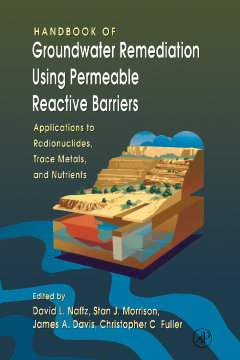
BOOK
Handbook of Groundwater Remediation using Permeable Reactive Barriers
David Naftz | Stan J. Morrison | Christopher C. Fuller | James A. Davis
(2002)
Additional Information
Book Details
Abstract
Over the last century and a half, groundwaters have become contaminated by a growing number of organic and inorganic substances ranging from petroleum-derived hydrocarbons to radioactive compounds, to cancer-causing hexavalent chromium. The importance of uncontaminated groundwater for agriculture, human consumption, and the environmental health of ecosystems is paramount to the health and productivity of industrial society. Water scientists and managers are focused on developing cost-effective methods to reverse this trend.
Several methodologies have been developed, however few are as cost-effective as the use of readily available materials, such as iron and organic compost, for absorbing and isolating contaminants within the matrix of a permeable barrier. The Handbook of Groundwater Remediation using Permeable Reactive Barriers presents readers with this latest technology and developments within four main sections:
1. Innovations in Design, Construction, and Evaluation of PRBs
2. Development of Reactive Materials
3. Evaluations of Chemical and Biological Processes
4. Case Studies of Permeable Reactive Barrier Installations
The Handbook is one of the first references specifically on this topic. It is an excellent fit for graduate students entering this emerging field as well as professionals conducting research or implementing this technology.
"...of use to private sector consultants, univ. and govt. researchers, and policy makers dealing with all phases of permeable reactive barriers, including fundamental science, design, construction, monitoring, and performance evaluation."
--Gerald Boyd (U.S. Dept. of Energy); Robert M. Hirsch (U.S. Geological Survey)
